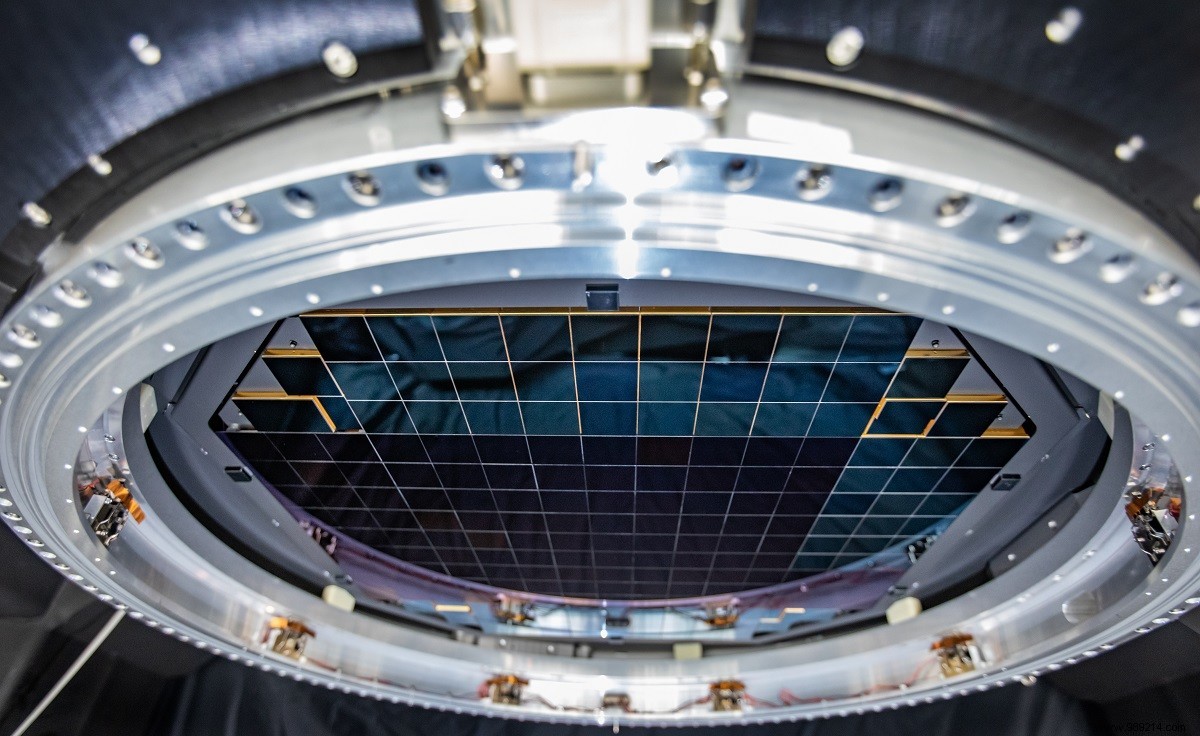SLAC researchers tested the future camera at the Vera C. Rubin Observatory (Chile), recording the first digital snapshots of 3.2 billion pixels in the world.
American researchers from SLAC (Stanford Center for Linear Acceleration) have been working since 2015 to build the largest and most powerful digital camera in the world. The instrument will be one of the centerpieces of the Vera C. Rubin Observatory currently under construction in Chile.
This telescope, which should be commissioned in one or two years, will aim to probe the small bodies present in our Solar System. He will also be responsible for identifying thousands of gravitational lenses in order to measure the impact of dark matter on gravity. Also the telescope will follow the movements of billions of stars and galaxies.
The device's focal plane, which measures 60 centimeters, includes 189 individual imaging sensors, each recording about 16 megapixels. A complete image will then gather approximately 3.2 gigapixels (3.2 billion pixels). Difficult to apprehend such an image. To get used to the idea, the researchers point out that we would need 378 4K ultra-HD television screens to be able to display these images in real size.
Sensors will be able to spot objects 100 million times darker than those visible to the naked eye. It's like you can make out a candle thousands of miles away. Note that this focal plane is also super flat, measuring about a tenth the width of a human hair. Enough to guarantee exceptionally sharp images .
Once in service, the digital camera will be used to regularly capture successions of panoramic images of the entire southern sky. The project, dubbed Legacy Survey of Space and Time (LSST), should last about ten years. Something to shed new light on the formation and evolution of the Universe.

That being said, SLAC researchers took the first photos of the device during a recent test. To do this, they bathed the focal plane in a cryostat to cool the sensors to -101.1°C, the required operating temperature. They then chose several topics. To take these photos, the team used a 150-micron pinhole to project the images onto the focal plane:
– The head of a Romanesco cabbage (for its many surface details)
– The Flammarion Woodcut
– A photo of the American astronomer Vera Rubin
– A photo montage with the teams working on the telescope
– All the logos of the institutions involved in the project. Note that you have the possibility to zoom in the different images.
“Taking these images is a major achievement” , said LSST project manager Aaron Roodman. “With the tight specs, we've really pushed the limits of what's possible to take advantage of every square millimeter of the focal plane and maximize the science we can do with it” .
Researchers plan to add the camera's lens, shutter, and filter swap system later this year. Once these tests are completed, the device will be transported to Chile and installed on the Observatory.